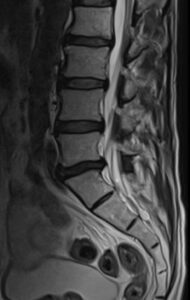
Dr. Petya Stefanova
Teacher
Assistant at the Faculty of Medicine at Sofia University and resident physician in Neurology at Sofiamed University Hospital.
Questions
Summaries
Videos
Audios
Какво означава терминът “апраксия”?
October 31, 2023
What is the definition of the medical term “apraxia”?
October 31, 2023
Какво означава терминът “агнозия”?
October 31, 2023
What does the term “agnosia” refer to?
October 31, 2023
Липсващ коленен рефлекс в ляво може да е симптом при:
October 18, 2023
Pathological reflexes are observed in:
October 18, 2023
Наличие на патологични рефлекси е характерно за:
October 18, 2023
What is the clinical interpretation of a suction positive reflex in elderly?
October 18, 2023
Каква е клиничната интерпретация на положителен палмо-ментален рефлекс?
October 18, 2023
Is muscle atrophy typically observed as a symptom of lower or upper motor neuron lesions?
October 18, 2023
Мускулна атрофия се наблюдава при:
October 18, 2023
If a patient has an absent knee reflex on their right leg, what could this symptom potentially indicate?
October 18, 2023
What is the primary function of the olfactory nerve (CN I)?
October 13, 2023
What is the vision field defect as shown on the picture?
October 13, 2023
What is the visual defect shown on the picture?
October 13, 2023
What is the most common reason for the visual defect shown on the picture?
October 13, 2023
Which brain area is primarily responsible for processing visual information received from the optic nerve?
October 13, 2023
The patient on the picture is looking straight ahead. What is pathology observed?
October 13, 2023
Parkinson’s Disease Differential Diagnosis Questionnaire
October 18, 2024
Role of the Direct and Indirect Pathways in the Extrapyramidal System: Balancing Motor Control
October 14, 2024

The Unified Parkinson’s Disease Rating Scale (UPDRS)
October 11, 2024
Lewy Body Dementia with Parkinsonism versus Parkinson’s Disease
October 11, 2024

Protective Factors for Parkinson’s Disease: Physical Activity, Smoking, and Caffeine
October 6, 2024
Alpha-Synuclein vs. Tau Protein: A Comparative Overview
October 6, 2024
Diet Recommendations for Patients with Multiple Sclerosis
August 6, 2024
Wallenberg Syndrome (Lateral Medullary Syndrome)
August 6, 2024
No videos found
Fake Smiles, Real Damage: How Digital Joy Breeds Fear and Anger
May 3, 2025
Understanding Neuropsychological Evaluations: What to Expect
February 25, 2025
Невропсихологическо изследване – индикации, провеждане и резултати
February 24, 2025
Невропсихологическо изследване – индикации, провеждане и резултати
February 24, 2025





